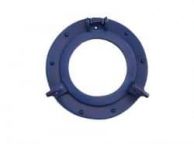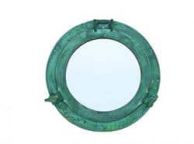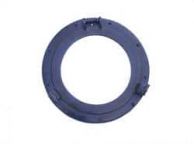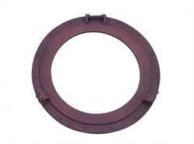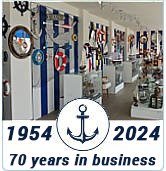|
|
| (132 Items) Sort: | Page: 1 2 3 | Show: / page |
| Page: 1 2 3 |
Port Hol Models
Few items more strongly evoke the image of shipboard life than the humble porthole. A uniquely nautical item, the porthole is not only an iconic feature of ships from freighters to ocean liners to battleships, but is a welcome window to light and fresh air outside the cabin for every sailor or passenger.
Handcrafted Nautical Décor is pleased to offer portholes of many designs and purposes to nautical décor enthusiasts. From true window-portholes to mirrors, clocks and other devices housed in porthole frames, we appeal to every need. Materials include solid metal and wood mounting bases to light-weight aluminum or resin for purely décor purposes, and with finishes ranging from lustrous polished brass to weather-worn tarnish to antiquing and even the rusted appearance of a shipwreck salvage, our portholes are certain to match any nautical décor tone or theme.
Ship builders throughout the ages have faced the same dilemma … how could they admit light and fresh air to the lower cabins and holds of a ship for the benefit of sailors and passengers, but keep out water and stormy seas that might swamp and sink a ship?
The solution to the problem was the development of the porthole. Attached to the inside of a ship’s hull, the porthole is more than just a simple window. Its round shape is strong, like an arch in engineering design, and not only preserves the structural integrity of the hull into which the opening is cut but also allows the window to better resist the pressures of wind and waves that might assail it. A basic porthole consists of two main parts. The first is a larger, outer ring which it attached directly to the interior hull of the ship and surrounds the opening it is to serve. Attached to this is a plate of window-glass fitted into a second, inner ring which is hinged to the outer ring so that it can swing open and closed.
When the inner ring is swung open, both light and air may pass freely into the hull for the comfort of the occupants. If the inner ring is swung closed it may then be tightened into place with one or more rotating, threaded screws (known as “dogs”) built into the outer ring that clamp through brackets of the inner. These create a water-tight and air-tight seal between the rings. Some portholes include a cover-plate that can be closed over the glass to prevent the entry of light if occupants are trying to sleep, or provide additional protection against storms than the glass alone.
Although the term “porthole” has a nautical origin, it has gone on to find use in military armored vehicles, aircraft, automobiles (such as the round windows of some Ford Thunderbird models) and even spacecraft from capsules to shuttles to space-stations. A nautical porthole is one of a broader class of openings or holes in the sides of a ship, known collectively as “side scuttles”.
In order to resist the force of storms and waves at sea, the glass of a ship’s porthole must be quite thick, often as much as two inches and accounting for the majority of the porthole’s weight. The metals most commonly used for portholes include corrosion-resistance bronze and brass, as well as steel, iron and aluminum. Submarines use acrylic plastic rather than glass for their portholes, while the International Space Station has portholes of quartz glass mounted in titanium frames. While portholes aboard submarines and spacecraft obviously are not designed to be opened, those of ships are required by construction and safety regulations to be large enough that a normal-person can climb out through them in the even of an emergency.
Thus, the humble porthole is the friend of sailors and ships’ passengers around the globe, admitting welcome light and fresh air into otherwise dark and stuffy cabins and holds, while protecting occupants from storms and waves at sea. For this reason, no other item more strongly cries “life at sea” than the humble but heroic porthole.
 Handcrafted
Handcrafted Handcrafted
Handcrafted Handcrafted
Handcrafted Handcrafted
Handcrafted Handcrafted
Handcrafted Handcrafted Model Ships
Handcrafted Model Ships




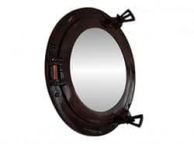
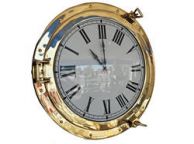
.jpg)


.jpg)






